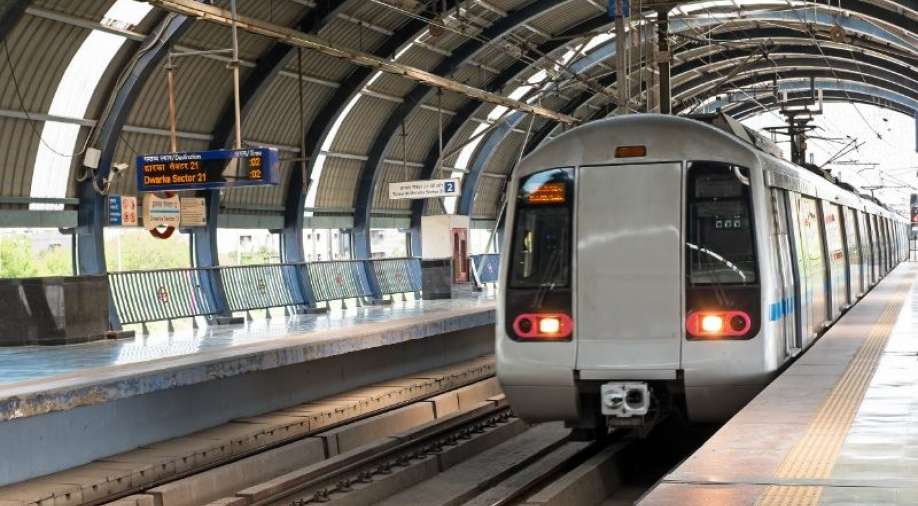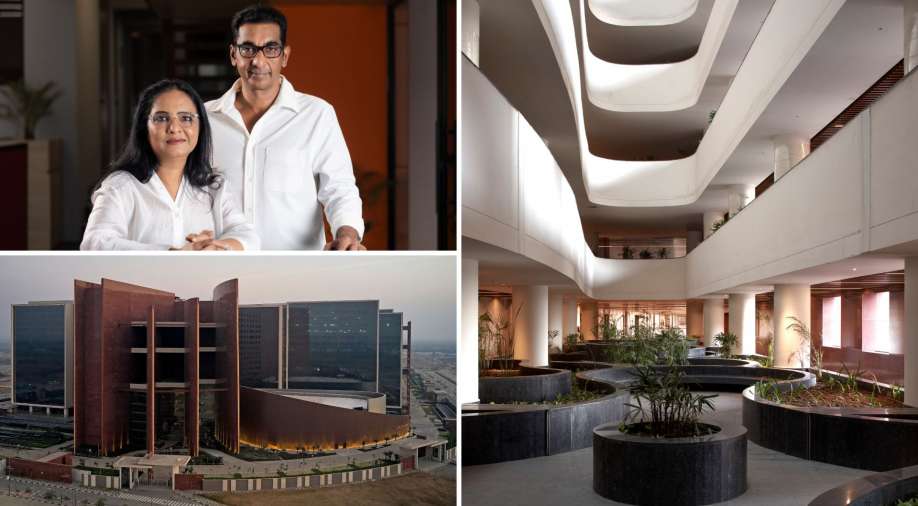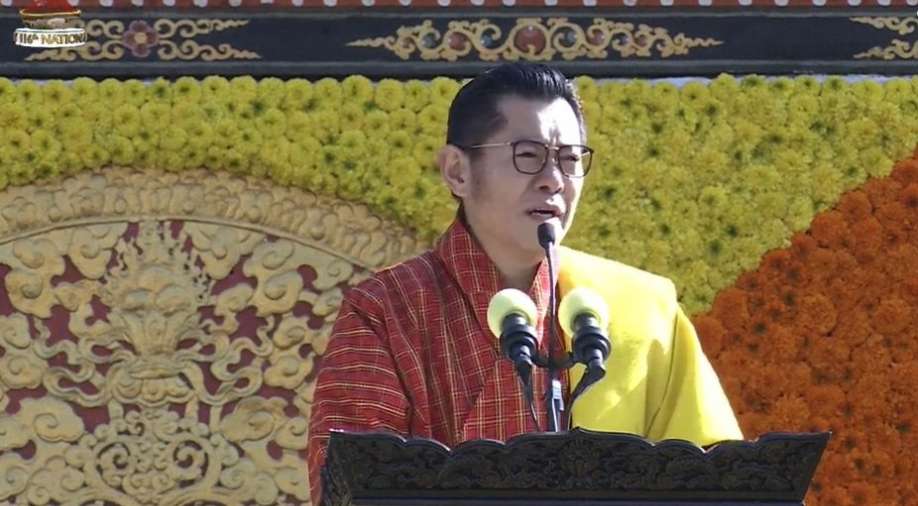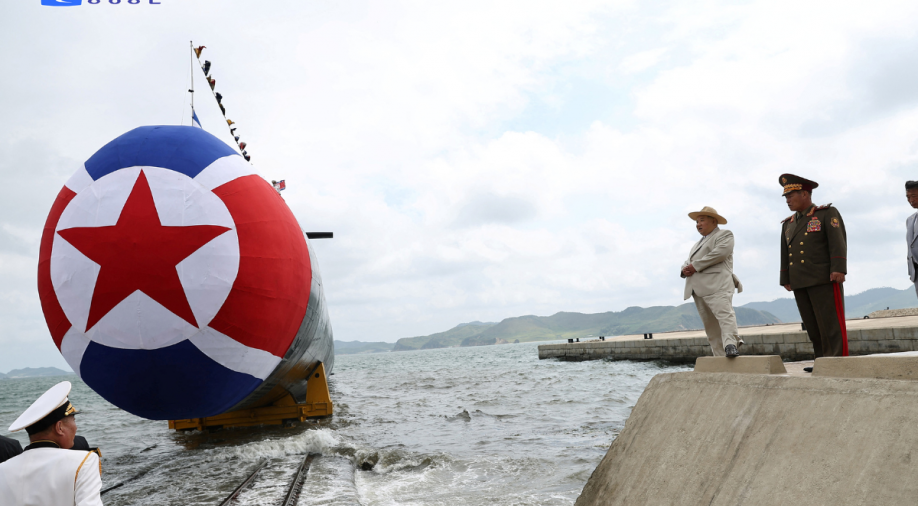In a futuristic move, Indian Prime Minister Narendra Modi on Sunday (Dec 17) launched the Surat Diamond Bourse (SDB), proudly dubbed the “world’s biggest workspace”. The innovative venture has set its sights on a bold mission: to relocate the entire diamond trading scene from Mumbai to the dynamic hub of Gujarat’s Surat.
Hailing the new diamond workplace, PM Modi said, “One more diamond has been added to Surat’s magnificence… The tall buildings around the world have lost their sheen in front of such a huge diamond.”
“Surat diamond industry has been giving employment to around 8 lakh people, and with the coming up of new diamond bourse, 1.5 lakh more of them will get jobs.”
“The Surat Diamond Bourse shows the strength of Indian design, designers, materials and the Indian concept… It is an emblem of new India and its strength. I congratulate the entire diamond industry, Surat, and the country for the Surat Diamond Bourse,” the prime minister added.
Today marks a special milestone with the inauguration of the Surat Diamond Bourse. This world-class hub is set to revolutionize the diamond industry, enhancing India’s global presence in gem trade while boosting local economy and employment. pic.twitter.com/yITxZ8BioV
— Narendra Modi (@narendramodi) December 17, 2023
×
WION reached out to Morphogenesis, the architectural firm responsible for conceptualising and bringing to life this structure, surpassing the size of the US Pentagon.
trending now
)
Delhi Metro: Woman dies after her saree got stuck in closing doors, enquiry launched
)
Exclusive: Meet the architects of Surat Diamond Bourse, world’s largest office, surpassing US Pentagon
)
Watch: Cringe alert! Snail seen moving in salad ordered from Swiggy
)
Bhutan’s king highlights railway project with India in National Day speech
)
US: 85-year-old man fatally stabs wife because he didn’t want to eat pancakes she made
)
Elon Musk talks about advertising, Italy’s declining birth rate in Rome
)
Pakistan grants judges, spouses airport body search exemption: Report
)
US warns nuclear attack by North Korea will result in end of Kim Jong Un’s regime
)
When Jamie Dornan kissed a horse once and ended up with swollen lips
)
China Pneumonia Outbreak: Rising COVID cases and pneumonia outbreak in China
)
SA vs IND, 1st ODI: Arshdeep, Avesh dismantle Proteas at Wanderers to earn statement win in curtain-raiser
)
UAE ‘gifts’ bankruptcy-hit Pakistan artificial rain
)
African scientist develops ‘gene drive tech’ that could wipe out Malaria from continent
)
Top 10 news: Funeral held for hostage mistakenly killed by Israel, Cardinal Becciu sent to prison, & more
)
Oman’s Sultan fascinated by India’s space project, interested in India-made drones, says Jaishankar
Here are the excerpts of the exclusive interview with Manit Rastogi & Sonali Rastogi, Founding Partners at Morphogenesis and Principal Architects of the building:
WION: What makes this office complex different from others in terms of its design?
Morphogenesis: Surat Diamond Bourse consolidates India’s 70,000-strong diamond community within the world’s largest single-office building. The project exemplifies high-density office architecture and transcends global sustainability benchmarks.
The building’s design draws inspiration from Surat’s socio-cultural context and the highly-efficient fishbone system of delivery — with users moving from a central circulation spine into each of the nine office blocks in a time-efficient manner. The urban spine varies in depth from 8m to 24m, housing all public activities.
It is a place for out-of-office trading, chance interactions and fostering the informal nature of business. To manage large volumes of people within trading-time constraints, the building is designed with walkable corridors across all floors, similar to an airport terminal, unifying it horizontally and vertically.
Functional proximities were determined by optimising travel distances from the site entrance to the farthest office module under four minutes from the entry point. The flow of people has been designed to minimise security such that once checked at the perimeter, traders can traverse the building multiple times a day. The structure rests on urban-scale columns that double up as seating areas.
A combination of thermal mass and porosity in relevant areas results in low external heat gains and therefore lower cooling loads. Hybrid climate systems integrate passive strategies for natural ventilation with energy-efficient mechanical cooling.
The central spine flares into vertical fins to funnel low-intensity winds using the Venturi effect, while staggered atria allow for the escape of hot air through the stack effect, thereby maintaining a pleasant microclimate. The building features one of the largest installations of radiant cooling (~300km), where the interiors are cooled by an energy-efficient system that uses chilled circulated water on the floors and ceilings.
The project is designed for maximum efficiency: Modular structural grids align efficient parking layouts, saving 25 per cent of the construction area. The two basements are designed to avoid the need for pile foundations, which would be typical in this area, thereby bringing costs down.
WION: What was your thought process when you started designing it, keeping the topography of Surat in mind?
Morphogenesis: Flood mitigation was one of the primary site constraints owing to the site lying roughly a metre below the highway road. The plinth was raised and a trench was created around its periphery to harvest rainwater. The construction uses conventional RCC combined with post-tensioned (PT) slabs for the nine towers.
The building has a central atrium that brings the outdoors inside and offers employees a space to interact with each other informally.
Ultimately, the Surat Diamond Bourse has been visualised as a bridge – connecting the city’s past, present, and future and embodying Surat’s spirit of trade, commerce, and innovation.
WION: How will this space benefit diamond merchants, and how is it designed to suit their needs?
Morphogenesis: Surat, India’s diamond hub, is undergoing a transformation with the Surat Diamond Bourse (SDB). It is a seed building for the Diamond Research and Mercantile (DREAM) City, an upcoming business district, triggering unprecedented socio-economic development in the region.
The provided design brief called for the provision of a single-function office for the world’s single-largest community of diamond traders, the Saurashtra Patels of the state of Gujarat.
However, Surat, where over 92 per cent of the world’s diamond pieces are cut and which contributes to roughly 80 per cent of India’s annual diamond export of nearly 700 billion rupees, lacked modern, affordable office space.
As a result, many small-scale merchants trade in the open courts and corridors within the Bharat Diamond Bourse in Mumbai, India’s only other diamond trading hub. In addition, thousands of workers spend up to 10 hours commuting 500km daily away from home and family in overcrowded trains from Surat to Mumbai and back to conduct their trade. Many small-level merchants can be seen trading in the open courts and corridors within the BDB.
The bourse directly benefits this vast population by bringing together diamond buyers, makers, and sellers under one roof. The design proposes independent and consolidated functioning for all client offices ranging in size from 28 sqm to as large as 7,000 sqm, making it a city within a city.
The building is commissioned by the community of diamond traders and built in a democratic manner, as a cooperative. The community worked to ensure that the building catered to the needs of all traders, with large designated office spaces for the large-scale traders as well as informal courtyard spaces that can be used flexibly by small-scale traders.
The design supports the community’s way of life, facilitating chance interactions, recreational activities, and open trading, like in a traditional bazaar. In addition, the diamond traders and facility managers responsible for the upkeep of the premises formed an integral part of the design team, ensuring that all requirements were factored in. The building is thus a result of the collective agency exercised by the community.
WION: How eco-friendly is this building, considering that it will accommodate several diamond merchants under one roof at any given moment?
Morphogenesis: Surat Diamond Bourse is a building that houses 67,000 people in India’s diamond community. It is the biggest office building in the world, and it’s been designed in a way that is good for the environment. The building has many open spaces providing shade and places for people to relax and do business. It’s like a big marketplace where people can buy and sell diamonds.
The self-shading tower blocks are oriented to cut out the harsh western heat and are spaced between 15 acres of landscaping that further keep the site cool. All the building’s community and circulation spaces, equivalent to 30 per cent of the built-up area, are naturally ventilated with passive cooling.
The central spine flares into vertical fins to funnel low-velocity winds using the Venturi effect, while staggered atria allow for the escape of hot air through the stack effect, thereby maintaining a pleasant microclimate.
Gardens distributed along the entire volume of the axis also work as natural air filters, enhancing indoor air quality. The building features one of the largest installations of radiant cooling (~300km long), where the interiors are cooled by an energy-efficient system that uses chilled circulated water on the floors and ceilings.
The north-south orientation of the office blocks, coupled with the narrow depth of the floor plates, ensures that more than 75 per cent of internal spaces are daylit, drastically reducing the dependence on artificial lighting. The common areas run on solar power throughout the year.
A sensitive approach to achieving energy efficiency has led to the building consuming 50 per cent less energy, compared to industry green benchmarks. These interventions have resulted in the building earning the Indian Green Building Council (IGBC) Platinum rating.
Locally sourced materials have been used in building the structure with a minimal waste-to-landfill approach. The construction incorporated Lakha red granite and Gwalior white sandstone, which were procured within a 300km radius. Stone-working communities from the Deccan Plateau were employed at all stages, from quarrying to dressing and application.
>>> Read full article>>>
Copyright for syndicated content belongs to the linked Source : WION – https://www.wionews.com/india-news/surat-diamond-bourse-meet-the-architects-behind-the-worlds-largest-office-surpassing-us-pentagon-670543































